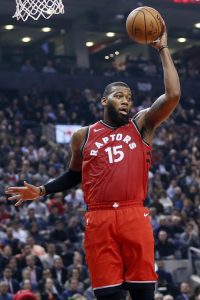A panel of ESPN’s NBA reporters and analysts were polled this week about the 2019/20 destinations for several key free agents, and the voting results on Kyrie Irving‘s home for next season were of particular interest.
It was less than five months ago that Irving vowed to re-sign with the Celtics in 2019, but in the wake of his more recent comments on free agency (“Ask me July 1”), ESPN’s panel isn’t overly confident that the star point guard will actually remain in Boston — the Celtics received about 53% of the vote, followed by the Knicks, Lakers, and Nets.
While Irving’s long-term NBA home will be a popular topic of discussion between now and July 1, it’s not clear that the 26-year-old himself even knows yet where he’ll play next season. After all, if the Celtics are bounced from the playoffs in the second round by a team like the Bucks or Raptors, Irving’s view on the franchise might be significantly different than if the C’s make a run to the NBA Finals and give the Warriors all they can handle.
If Irving sours on Boston, a move to New York could be appealing. The Nets are further ahead in their rebuild than the Knicks and will have a maximum-salary contract slot available. Of course, the Knicks will have two such slots, which would give Irving the opportunity to bring another star player along with him.
The Lakers have become an increasingly popular hypothetical destination for Irving, given the Lakers’ need for a second star and the efforts Irving and LeBron James have made to mend fences. Still, it’s hard to imagine the two All-Stars teaming up again after how things ended in Cleveland. L.A.’s other team, the Clippers, might make more sense as an Irving destination — they’re ahead of the rival Lakers in the standings this season and could potentially create a path to two max-salary slots.
Of course, there will be other teams with cap room available, but if Irving leaves Boston, those New York and Los Angeles teams look like his most probable suitors.
What do you think? Where will Irving be playing when the 2019/20 season begins? Will he stick with the Celtics, or have there been enough red flags in Boston this season that you expect him to jump ship and get a fresh start somewhere else?
Vote in our poll, then head to the comment section below to weigh in!
Trade Rumors app users, click here to vote.

